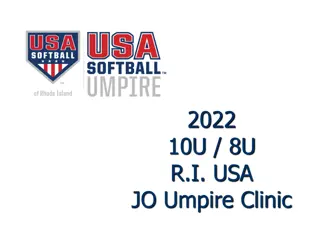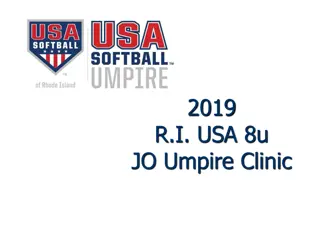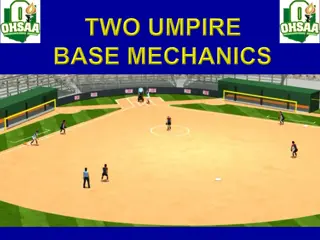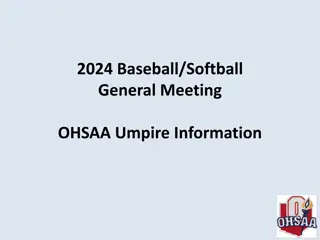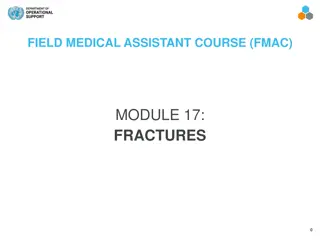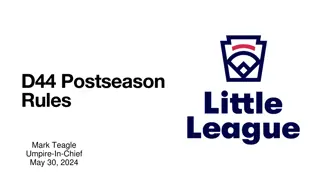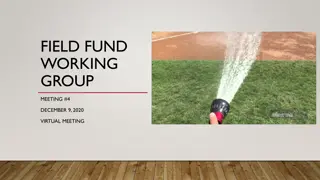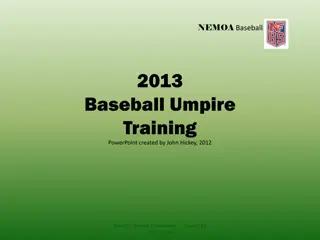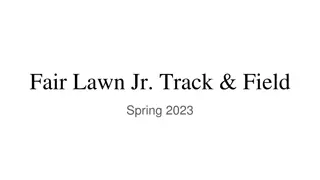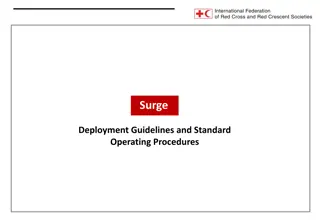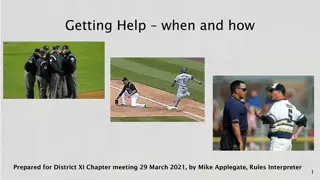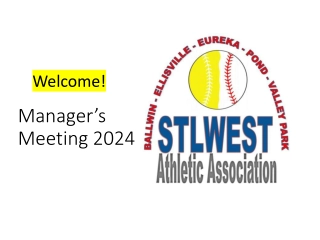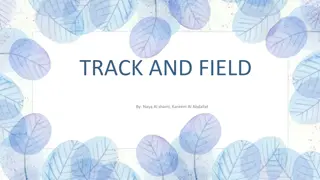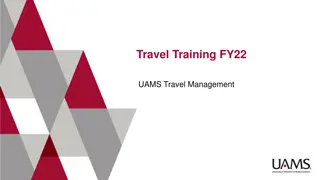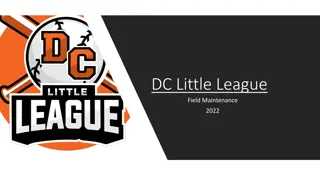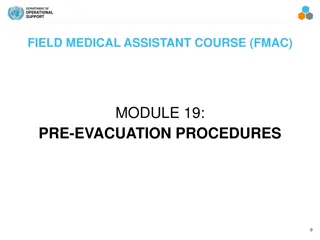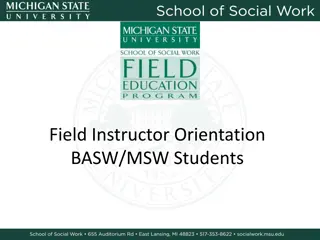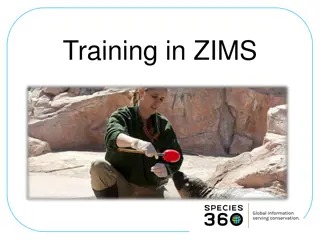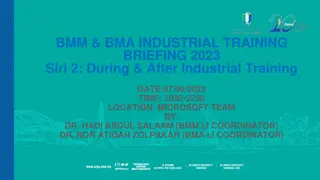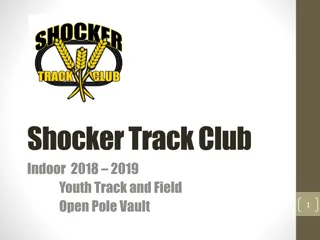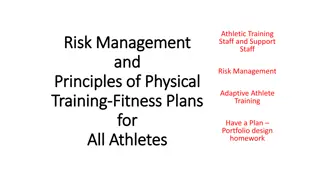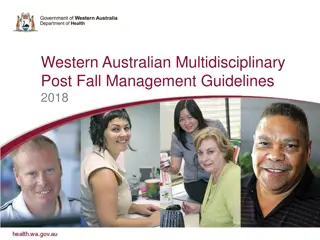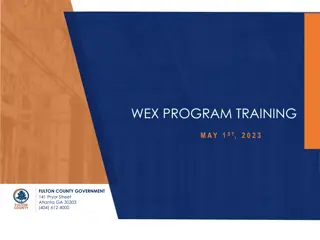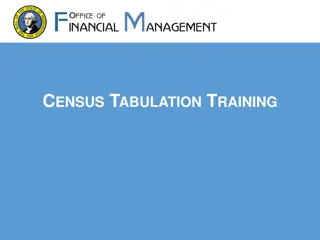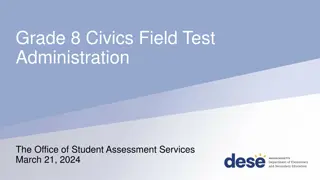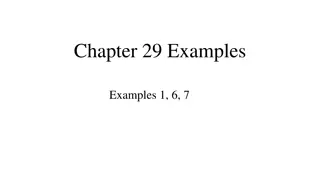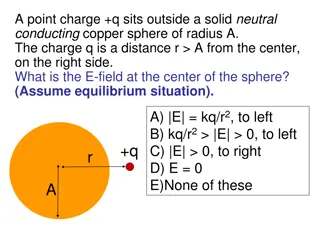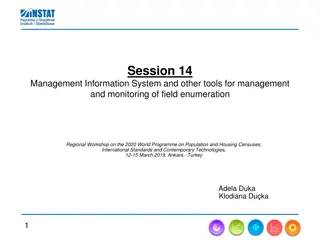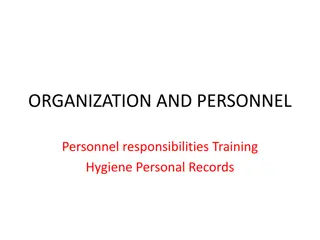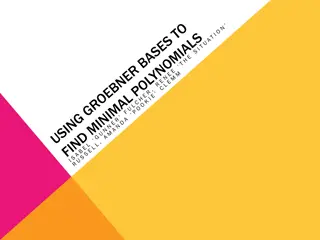Umpire Training and Field Management Guidelines
Umpire training guide covering uniform requirements, field arrival protocol, coaches meeting conduct, dealing with challenging situations, scheduling app usage, on-field positioning tips for fair and foul balls, and more. Emphasizes the importance of preparation, communication, and rule enforcement in maintaining a smooth game flow.
Download Presentation

Please find below an Image/Link to download the presentation.
The content on the website is provided AS IS for your information and personal use only. It may not be sold, licensed, or shared on other websites without obtaining consent from the author. Download presentation by click this link. If you encounter any issues during the download, it is possible that the publisher has removed the file from their server.
E N D
Presentation Transcript
Uniform Shirt: Blue umpire shirt or something similar. Exa- Blue polo or plain blue tshirt. Shorts: Can be black, grey, or khaki. Should be appropriate length, have pockets, and be a little baggy with room to move. (Remember, you will be running, bending, squatting) Clicker or counter (keeps track of balls, strikes, outs, and innings): I have these for sale for $3. Let me know if you need one. A watch to keep game time, or can use your phone.
Arriving to the field Get to the field about 20 minutes before game time. Check in with field supervisor, get game balls, and put on equipment (if needed). Have teams take infield 10 min before game if needed. Conduct coaches meeting about 10 min before game, no later than 5 min. Get the game started ON TIME!!!! Remember to tell the scorekeeper start time. Announce PLAY BALL and point to the pitcher, starting the game!
Coaches meeting I want all umpires running the coaches meeting. Take charge and be confident. Go over specialized rules if any for that age group. Remind everyone to have fun!
Dealing with yellers Develop thick skin. Let some comments go. If a coach is repeatedly arguing or yelling, issue a warning. If problem persists, they can be thrown out. The field supervisor will back you up with any coach or fan that is not acting appropriately. If a coach has a disagreement on a rule, you can stop the game and refer to the rules. Take coaches aside to discuss. Use the field supervisor as a reference to rules questions if needed.
Miscellaneous Rainout Line: 785-542-0011 Also there is an app that is very handy to have. Assignr: Our scheduling software. After game schedules are entered, everyone will need to log in and enter their availability. I will let everyone know when to do this. If you have text messages active on Assignr, it will send notifications and reminders of games you are scheduled to work. This is very handy and everyone should do this!!!!!!
On field positioning Fair and foul balls: Remember, what determines fair and foul is where the BALL is, not the PLAYER. Home plate and all bases are FAIR. The chalk line is fair. Even if a ball is barely touching the line, as long as it is touching, it is fair.
Fair and foul continued Some of the batters box is fair. Imagine a line being drawn for the back of the plate to 1st and 3rd base. As you can see, the top inside corners of each batters box is in fair territory. (shown in yellow)
Positioning for plate umpire TBALL and 7/8, 8U You will not need to be behind the plate for these ages because you are not calling balls and strikes. Stand slightly behind and to the side of the plate. Make sure you are far enough away from play to be safe and out of the way of the base coaches coaching their players. Remember, with tball you are helping put the ball back on the tee.
Positioning plate umpire continued Bring the ball into play: https://youtu.be/V0CQYCreFNU Calling time: https://youtu.be/gHH-1GU5620 Calling a strike: https://youtu.be/_DvVCqFBtq0 Calling a ball: https://youtu.be/_N38hSG17tg Giving the count: https://youtu.be/nGul2ugwKo8 Calling balls and strikes: Refer to the youtube video sent out on proper positioning to call balls and strikes. https://youtu.be/zf84ZrxOl7U
Field umpire positioning- 2 person crew PU and BU Where do I stand at the start of each play? In 1 of 3 positions. Stand in the slot that is directly in front of the lead runner.
BU (base umpire) positions continued If no runners on base, start in Position A. If a runner is on first, start in position B. (1 ahead of lead runner) If runner is on 2nd, start in position C If runner is on 2nd and 3rd, start in position C. If runner is on 3rd, discuss with Plate umpire if he would like you to be in
BU working Area If the ball is hit and fielded in the infield, stay outside the base path to make your call. If the ball is hit and fielded in the outfield, run inside the base path (into the working area) to make your call.
Quiz Everyone must take this quiz before umpiring a game. Umpire quiz A lot of the info and diagrams are from littleleagueumpiring101.com. This can be a great resource to refer to. If you have any questions about any of the info in these slides or about any of the questions on the quiz, please ask. Or if you have a question about something that was not covered in these slides, please ask!
Rules All of the rules can be found on eabsa.com KNOW THE RULES!!!! The better you know the rules for the age group you are umpiring, the easier your job will be. We will also have cheat sheets at the fields for you to review before the game. I have also emailed and groupme my cheat sheet of the rules. Those are good to review right before you get to the ballfield. It is ultimately your responsibility to know the rules and come to each game prepared. Please take this as seriously as any other job you would have. We all ask that you try your best and know that the board members are all here to back you up and support you. Don t be afraid to ask about any rules. And if you make a mistake, it s OK! Umpires are human. Learn from it and move on.


